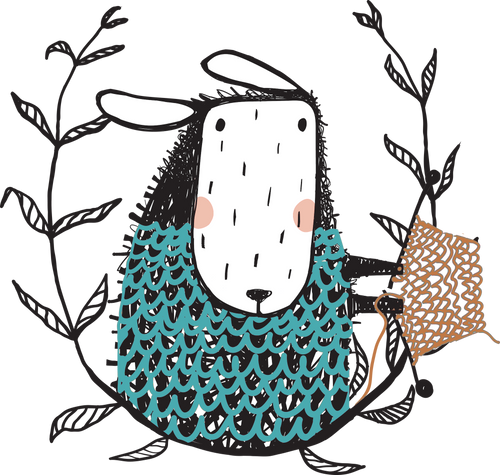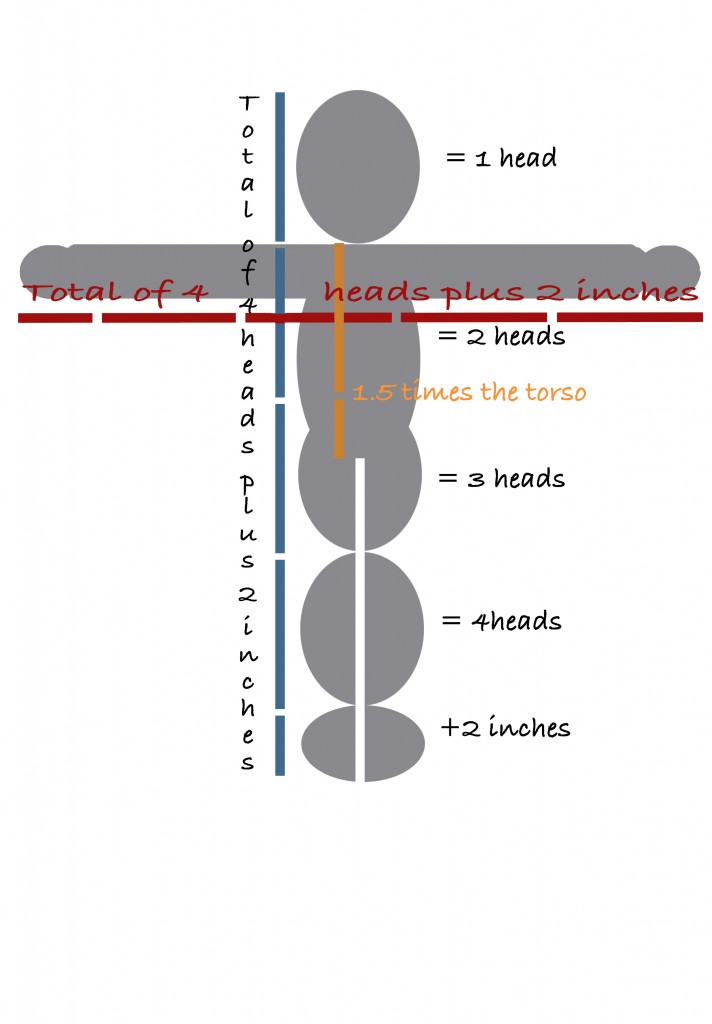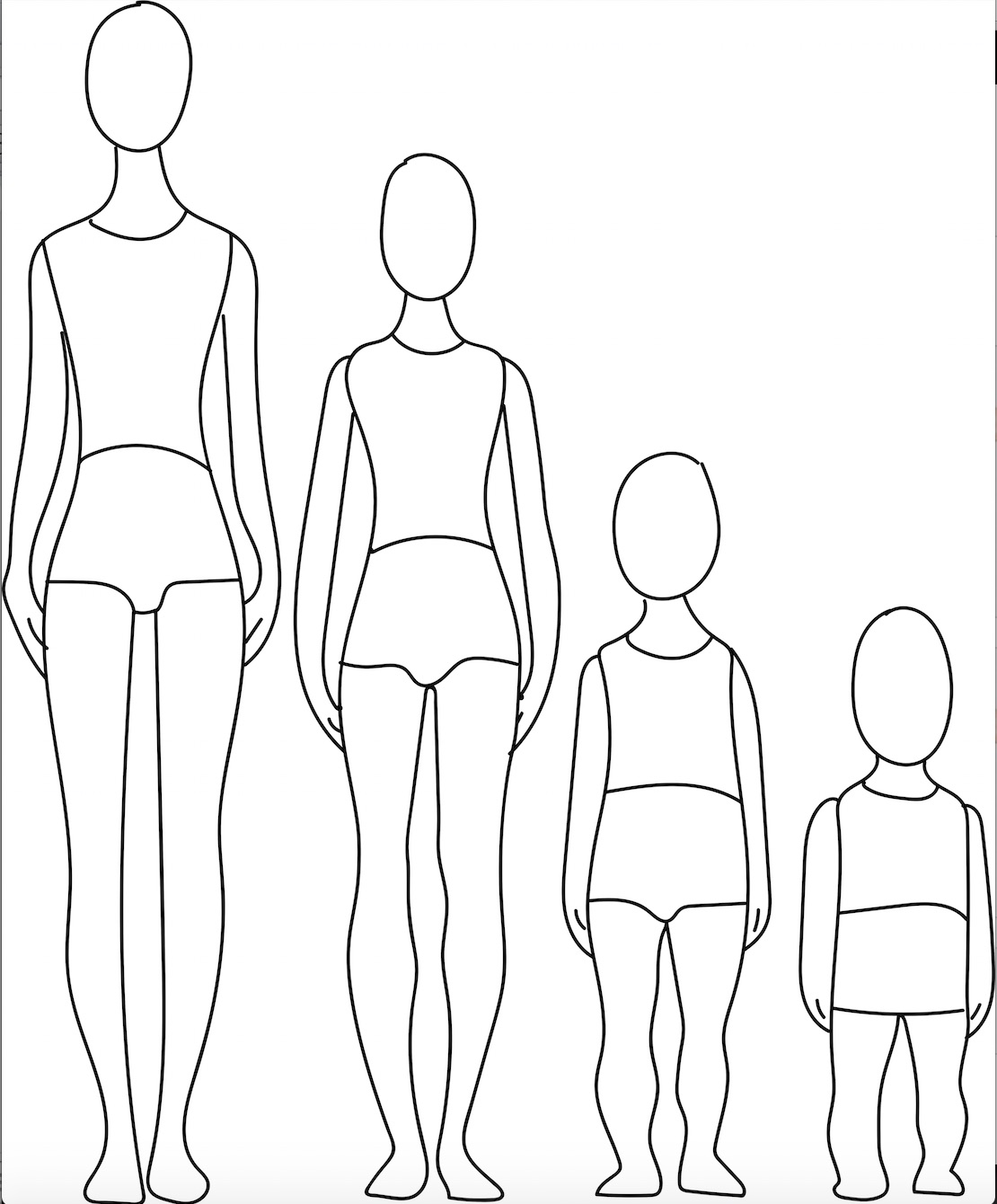From Pattern to Sewing
You will:
create a paper pattern using the formula below.
pin the paper pattern to the fabric, be sure to fold the fabric with the fold unless otherwise noted.
you will add a 1/4 inch seam allowance before cutting out the fabric.
The formula I use to create my dolls is:
To figure the length of the torso with legs, you take 3 times the height of the head plus 2 inches for the feet. So the total length of the doll will be 4 times the height of the head.
The width of the legs is the height of the head.
The arm length is 3 times the height of the head plus 2 inches. The width is the width of the head.
The torso measures 1.5 times the height of the head
Example measurements:
Head height = 4 inches
Head width = 3.5 inches
Length of torso with legs = 3x4 inches = 12 inches, 12 inches + 2 inches (for feet) = 14 inches
Width of torso = 3.5 inches, height 1.5 times the length of the head = 6 inches
Arm length = 14 inches long, 3.5 inches high
Chest height = 3.5 inches (height of arms) + rise 2.5 inches = Torso length = 6 inches
Legs = 8 inches long, 4 inches wide
The total length of doll approx. = 16 inches
Having these measurements will help you create the doll, but you should keep in mind that they can be adjusted. If you would like to make a younger looking doll you want the head a little larger, or the limbs a little shorter. Let's say you want to create a doll that looks like a two-year-old, the head will be larger in proportion to torso and limbs compared to a six-year-old. Legs and arms may be also a little chubbier, so just add a little to the width to create this look.
Another option is to be creative with your pattern, instead of legs you could add a mermaid tail or a rectangle, or pouch (more like a pillow).
You can also sew ribbons with different texture into the seam for visual and sensory stimulation. I remember a customer of mine whose child was visually impaired and asked for brighter colors and different textures. Those special needs can easily be met with custom or handmade products.
Proportions from young child to adult.
If you visualize where the belly button would be on each form, you can see how the proportions change.
You will:
create a paper pattern using the formula below.
pin the paper pattern to the fabric, be sure to fold the fabric with the fold unless otherwise noted.
you will add a 1/4 inch seam allowance before cutting out the fabric.
We will be using the following stitches:
the running/basting stitch
the back-stitch.
Yes, in the video below I made a mistake! I don't know how it happened, but it did. If you pay close attention watching the video you will notice that I made the arms one-head-length too short. Even though the description tells you to multiply the length of the head by 4 and add 2 inches, I only multiplied the height of the head by 3 and added 2 inches, creating a pattern where the length of the arms is the same length as the torso and legs. This is wrong! The arm length should be to the total length of the doll adding 2 inches. The middle section of the arms will disappear inside the torso, so that will not really count toward the arm length. I decided to show my mistake, and not delay the launching of the course. The process of creating the pattern and sewing them into/onto the doll is the same, no matter the length, and I love how this doll turned out! Judge for yourself, the arms are too short, right? Sometimes you have to embrace the "special" things in life.



